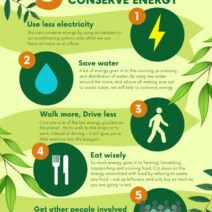Have you ever pondered how a minor increase in temperature could impact your daily life or the quaint charm of your neighborhood? While headlines often sensationalize the issue, the truth of global warming’s effects can be subtle yet profound, weaving its influence into the very fabric of our communities. Global warming is not an abstract concept distant in time or geography. It is already here, altering ecosystems, shifting weather patterns, and affecting human health.
Firstly, let’s consider the implications of rising temperatures on local climates. The average global temperature has steadily climbed, primarily due to greenhouse gas emissions from human activities. In many neighborhoods, this manifests as more frequent heatwaves. How often do you find yourself sweating through a surprising mid-March day? Cities like Phoenix or Miami experience increased heat retention due to urbanization, resulting in elevated energy demands for cooling systems. Imagine the strain on the local electric grid when your neighbors crank up their air conditioners. This situation leads to higher utility bills and challenges in energy sustainability.
Furthermore, the warming atmosphere has far-reaching effects on precipitation patterns. Regions accustomed to certain weather patterns are witnessing shifts, often leading to erratic rainfall, floods, or droughts. Consider how farmers in your locality are adapting their practices. Are they planting different crops because of changing seasons? In many places, farmers are compelled to switch to more resilient varieties to withstand longer periods of dryness or the sudden deluge of rain. The ripple effects reach beyond agriculture; changing food supplies can inflate prices and alter market dynamics. Are we prepared to tackle the challenges that come with these significant agricultural shifts?
Now, let’s traverse beyond our local landscapes to Indonesia, a vital case study when discussing global warming. This Southeast Asian archipelago possesses a staggering biodiversity, but climate change poses existential threats to these rich ecosystems. Rising sea levels, a direct consequence of melting polar ice, threaten low-lying coastal communities and unique habitats. Indonesia is home to many small islands and extensive coastlines, where rising waters encroach upon human settlements and natural reserves. Would you imagine living just a few decades from now, where your neighborhood could transform into marshland?
Moreover, Indonesia’s geography makes it particularly vulnerable to climatic changes. The region experiences a significant amount of rainfall, creating challenges in terms of flooding and water management. Ironically, while some areas suffer from excess water, others experience debilitating droughts. Flooding in one part of the country can lead to food shortages as supply lines are disrupted disproportionately, exacerbating poverty and food insecurity. Can we anticipate how this variance in precipitation could affect global food prices and, consequently, our local grocery bills?
Across the globe, more localized impacts are emerging. Increased temperatures and erratic weather patterns foster conditions conducive for pest invasions. In your neighborhood, you may have witnessed an uptick in unwanted insects or diseases as warmer climates allow pests to thrive. This phenomenon can lead to heightened risks for public health and agricultural losses. Have you ever considered the additional measures local governments might need to implement to manage these burgeoning pest populations?
Moreover, the health implications of global warming are alarming. As air quality deteriorates due to higher temperatures, urban areas grappling with pollution face heightened respiratory issues among their populations. Children, the elderly, and those with pre-existing conditions are particularly susceptible. Just imagine the strain on local healthcare systems when there is an increase in cases of asthma and other respiratory ailments. The long-term implications on public health infrastructure could be staggering. What proactive measures can we adopt within our communities to mitigate these emerging health crises?
Interestingly, the effects of global warming are not evenly distributed. Marginalized communities often bear the brunt of its impacts, as these groups frequently have limited resources to adapt to changing conditions. Inequities in housing, health, and access to local services lead to disparate experiences of climate change. Shouldn’t we ask ourselves how to ensure that solutions to climate challenges prioritize those most vulnerable?
Through all these layers of complexity, one critical point remains clear: community engagement is essential. Grassroots activism, local businesses, and individual citizens can make significant impacts. Initiatives such as community gardens, tree planting drives, and educational programs can cultivate awareness and foster resilience. As you ponder the many ways global warming touches your neighborhood, might you consider organizing or participating in local initiatives?
In summary, global warming reaches far beyond the headlines, intricately entwining itself with our daily lives. From alterations in weather patterns to impacts on public health, the consequences are multifaceted and pervasive. As we contemplate these challenges, asking ourselves how we can foster resilience at local levels becomes paramount. Whether in the midst of our neighborhoods or the distant shores of Indonesia, understanding and addressing global warming is everyone’s responsibility. And it starts with us—each meaningful action can spur a ripple effect towards a more sustainable future.







